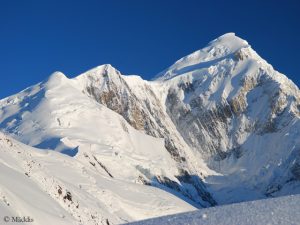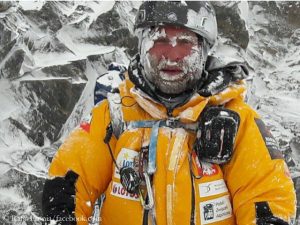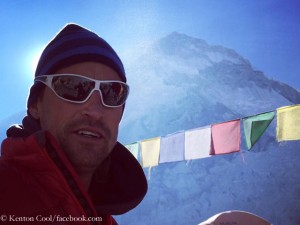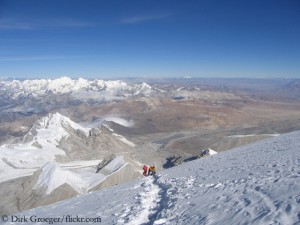Rockfall on Spantik
It was close, damn close. “We were very, very lucky,” writes Patrick z’Brun to me. The mountain guide was part of a Swiss team that escaped a tragedy by a hair’s breadth on the 7,027-meter-high Spantik in the Karakoram this summer. The day after their arrival, the climbers were just setting up their base camp. “Suddenly someone shouted ‘Rock, rock’,” reports Patrick. A large boulder rushed through a couloir directly towards the base camp. Nearly 200 meters ahead of the camp, the boulder divided into two pieces without them changing direction: “Two kitchen tents and a sleeping tent were sheer shaved off. The two rocks rushed past two climbers by a hair’s breadth.” According to Patrick’s words, an expedition member just managed to save himself by jumping behind a small wall on which the kitchen tent had stood. An eight-second video of the incident documents how lucky the group was:
“Definitely traumatized”
“As an emergency measure, we determined escape routes for each individual and established a permanent night watch,” writes Patrick z’Brun. “During the night there was another rockfall, but it did not cause any damage. The people (including the porters) were definitely traumatized and partly refused to go back into the tents.” The next day the Swiss climbed further up to take a look at the danger zone. “On site – at about 4,800 meters – we realized that this was only a prelude. Up there, there were still a lot of boulders waiting, and we discovered some cracks,” reports the 56-year-old, who had climbed Mount Everest in 2008. “It was only a matter of time before the next incident happened.” The Swiss packed up – and later found a nice alternative destination nearby: they succeeded in the first ascent of a 5633-meter-high summit, which they named “Swiss Sherpa Peak”.
A “good-natured mountain” so far
Spantik – first climbed by the Germans Reinhard Diepen, Edward Reinhard and Joachim Tietze via the southeast side in 1955 – has been a popular destination for commercial expeditions for years. Kari Kobler, whose company had organised the Swiss team’s trip this summer, described the seven-thousander to me as “a mountain that had been really good-natured so far”. It remains to be seen whether Spantik will continue to appear in the “Kobler & Partner” program in the future. An alternative location for the base camp and also a route variant are to be examined.
According to Patrick z’Brun, local porters pointed out that until ten years ago the base camp had regularly been pitched up further down the glacier and that even earlier, mountaineers had climbed via an eastern ridge directly to Camp 1 in order to avoid the danger zone.
Climate change sends its greetings
The risk of rockfall in the Karakoram has been increasing in recent years. “It is becoming more and more a problem due to climate change”, confirms Dominik Müller, head of the German expedition operator “Amical alpin”. “Areas that were still covered with snow a few years ago are snowless now, with more and more debris appearing.”
Being warned now
In the three days before their arrival at the foot of Spantik there had been heavy rain for three days, writes Patrick z’Brun. “We noticed (especially after the rockfall) that there were many stones lying around in the base camp. But we hadn’t thought too much about it.” But from now on, Patrick says, nobody can say any more: ‘You couldn’t know that.’









